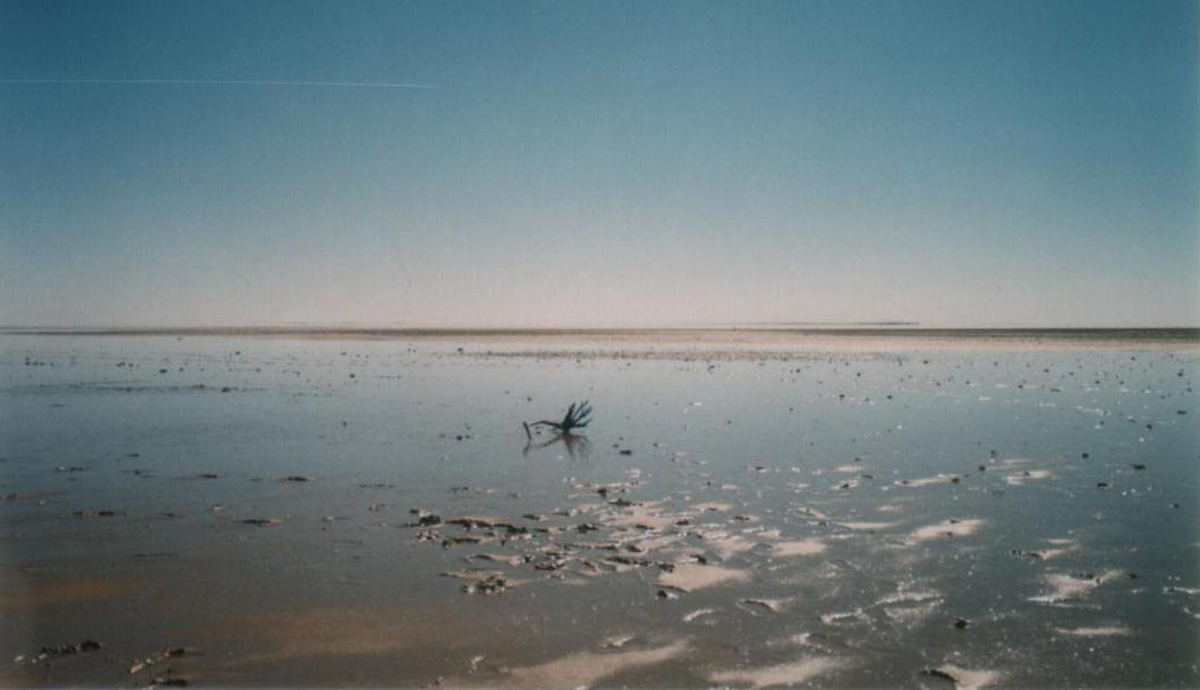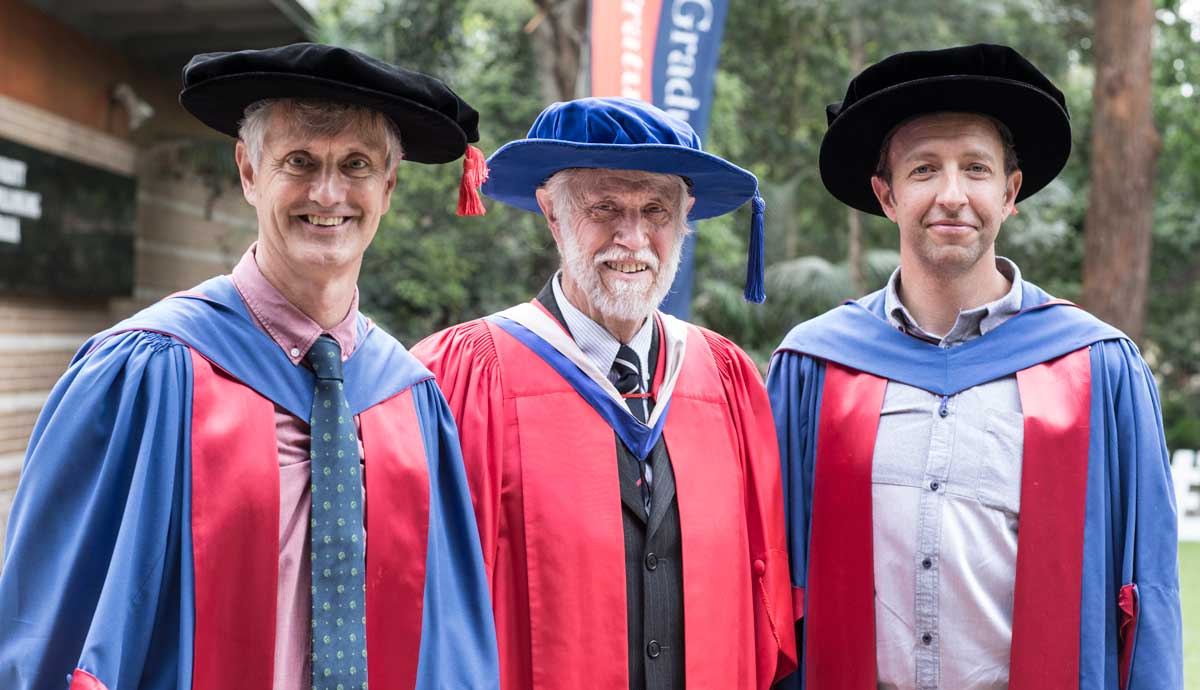April 19, 2017
Gerald Nanson honoured for uncovering the secrets of Australia’s geological past
A fascination with how the earth was shaped by water and time started with digging for the dead.
At the Autumn graduation celebrations, Professor Nanson was today (Wednesday 19 April) awarded the title Emeritus Professor in recognition of his contributions to Earth sciences research. Professor Nanson joined UOW as a lecturer in 1977.
He played a major role in shaping the research and teaching initiatives in the former Department of Geography, the subsequent School of Geosciences, and ultimately the School of Earth & Environmental Sciences.
The understanding of how the desert landscapes of Australia have evolved through the past one million years has been greatly enhanced by his published research, which has attracted wide international recognition.
His first foray into geology was a far cry from the halls of academia.
“I jokingly tell people I started life as grave digger,” Professor Nanson said. “It was only a summer job but that's sort of how I got started.
“I got to see the geology and what I was digging and became quite interested in soils and geology as a grave digger.
“I moved to being particularly interested in rivers because there was very exciting work being done in the US at the time, quantitative work on the hydrology and geomorphology of rivers.
“It was the first time the sort of work was being done and as an undergraduate student I just found it fascinating.”
 Research revelad that 50,000 years ago Lake Eyre was an inland sea teeming with life. Matt Malone/Wikimedia Commons, CC BY
Research revelad that 50,000 years ago Lake Eyre was an inland sea teeming with life. Matt Malone/Wikimedia Commons, CC BY
In the decades since, his work has led to new understandings in how landscapes form, particularly how rivers change form and direction over long periods of time.
In recent work, Dr Nanson and colleagues revealed that about 50,000 years ago, Australia’s interior was laced with perennial rivers that fed huge, permanent inland lakes.
“Mega-Lake Eyre held roughly ten times the water volume achievable under today’s wettest climate, and if present now would rank among the ten largest lakes (in area) on Earth,” Professor Nanson and his colleague wrote for The Conversation.
“This truly was the inland sea that proved so elusive to Charles Sturt and other 19th-century colonial explorers.”
What most visitors would interpreter as a dry, harsh environment, Professor Nanson sees as a landscape of great beauty, where the dust and rock holds the secrets of time.
“To us, it's full of information. We extract that information and it’s basically a library that you can read when you're out there,” Professor Nanson said.
“This knowledge is very important for understanding the nature of climate in Australia. How has Australia's climate responded in the past the various events and therefore what are we likely to see in the future?
“Past climate is a very clear guide to what will happen in the future.”
 Emeritus Professor Gerald Nanson (middle) with former students and current leading researchers, Professor Bert Roberts (left) and Dr Tim Cohen.
Emeritus Professor Gerald Nanson (middle) with former students and current leading researchers, Professor Bert Roberts (left) and Dr Tim Cohen.
Professor Nanson was instrumental in the early development of the thermoluminescence dating laboratory in the Department of Geography and subsequently attracted one of his former PhD students, and now Laureate Professorial Fellow, Professor Bert Roberts, to return to UOW to establish an Optically Stimulated Luminescence Dating laboratory.
Professor Nanson has successfully supervised 19 PhD students and seven postdoctoral fellows.
Many of his former PhD students have become respected researchers at the international level, obtaining academic positions in universities in Australia and abroad.
Professor Nanson has been, and remains today, a very active and inspiring researcher and university educator, as well as an inspiring mentor of colleagues and doctoral students.
:format(jpg)/prod01/channel_3/assets/live-migration/www/images/content/groups/public/web/media/documents/mm/uow231393.jpg)